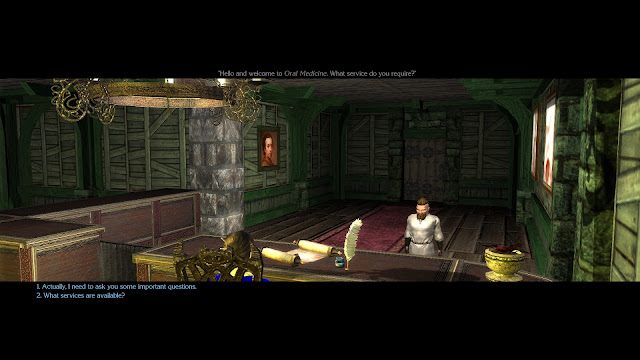As we approach the end of yet another year of module writing, I end it looking forward with eager anticipation and hope that the next module, Predestinated Days, will see a release some time later next year ... more likely towards the end of it! For now, this is going to be a relatively short blog this month, with just a few notes of what I've managed to do this year, and where I hope to be heading next year. Writing Predestinated Days has certainly been a long journey, even up to now ...
That Which Is Done!
The start of this year saw me turning to some of my old pen and paper (PnP) scenarios with a view to bring them to NWN2. In the last year I have successfully managed to incorporate one side quest, which turned out far more involved than I first thought it would be, and have the foundations of two more core dungeons laid out.
Later, I delved into developing some rotating puzzles for my mega-dungeon, which was first started around July 2019. Work on this mega-dungeon has been continuing back and forth as I come up with more ideas with which to fill it and make better use of its size. Importantly, I have also developed a number of new gaming systems for that dungeon, which I hope will all add to a very exciting experience alongside the normal fun of deep dungeon delving.
Another area I have worked on has included new creature AI, including vampires with gaseous form and their coffins; lycanthropy and its curse (and curing), and the ankheg and its spit! Each of these creatures has its own areas of interest, which I have also been developing alongside the creature itself.
Later in the year, I realised that the scale of the world had grown larger than I first realised it was going to, and so I had to start bringing in more areas, which meant I also needed to consider new quests. Using NPCs that I had from my PnP days that fitted the bill, I wrote some new side quests, which has taken a large amount of my time over the last six months that had not been expected. These, however, are now done, mostly.
By now, my coding skills had improved from a year or two back, and I started to rework some of the earlier code, including improving shop vendor response interaction, conversation background options, journal updates and even write a small card game. Some of these updates I made backward compatible and released v1.50E (onwards), which supported the improved game mechanics. Other code, like the card game, will be included as a new experience in the next module, Predestinated Days.
As this year draws to an end, I find in the last few months I have been bringing together some of those more difficult plot lines that are brought in from the first module, The First Day, and that now come together for the two background choices within this second module. Basically, the core plot line has now been solidified for both backgrounds, meaning journal entries moving forward will no longer have to consider the difference in background choices.
That Which Is To Come!
Moving forward is primarily about continued development of conversations and quests. Many of the side quests (that I have started) are now done. That's not to say that I may have another idea or two for other side quests that may present themselves to me as I move forward. Around three small side quests remain to be written, with a couple more larger ones that mainly require dungeon design and monster balancing, as well as any puzzles or literature I may decide to include.
As far as the main quest goes, I have now structured it in such a way that it has its own number of "side quests" that must be played to move the main quest on. I have around two to three of these "main quest sub-quests" left to finish, but at least one involves the mega-dungeon, which is currently an unfinished environment, and which is likely to end up with another side quest or two of its own on top of what I currently have for it.
There is still map (overland and static) work to be done. The world maps themselves are complete, although I have still yet to finish all links involved subject to player path through the module. These should not take me long once I have all the quests finalized though.
I already have in mind where some of the final battles will take place, but they still need to be considered for game balance and general appeal. Then, on a final note, I intend to design a location where some concluding plot details will be learned by the PCs that I hope will leave the player in a satisfying position in relation to the module's current end-game and what they might be able to expect in module three, called The Last Day.
Outstanding In Brief ...
- Area with a PnP scenario adaption x4 (One side-quest. Three essential.) (*)
- Unique area with new dungeon x2 (One side-quests. One essential.)
- Mega-dungeon (various sections) (Essential.) (**)
(**) A complex environment with its own systems involved, which requires careful attention.
 |
| Preparing To Embark On A Long Journey! |
















